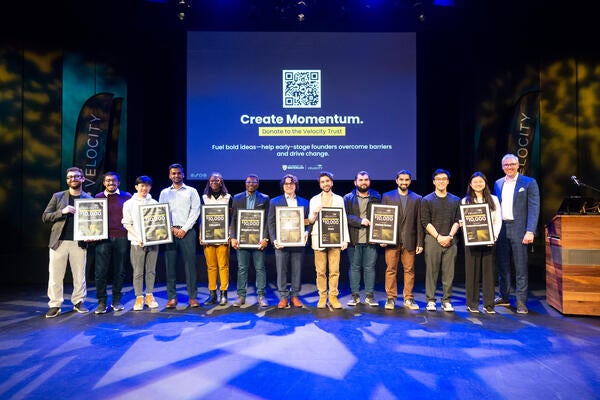
Waterloo launches free computer science courseware
Recognized as a leading computer science educator, the University of Waterloo is helping to close the global digital divide with free courseware for anyone with an Internet connection

Recognized as a leading computer science educator, the University of Waterloo is helping to close the global digital divide with free courseware for anyone with an Internet connection
By Amy Aldous Faculty of MathematicsAs educators struggle to expand digital literacy globally and U.S. President Obama announces a $4-billion Computer Science for All initiative, the University of Waterloo is launching free online courseware that will teach people computer science and programming skills.
“Digital literacy is as crucial as the ability to read and write for the current generation,” says Stephen Watt, Dean of the Faculty of Mathematics. “There will be a distinct divide between those with programming skills and those without. A university degree in computer science isn’t the only way to learn programming. The courseware makes it freely accessible to anyone with an Internet connection.”
The courseware was developed by Waterloo’s Centre for Education in Mathematics and Computing (CEMC), the same group that launched successful mathematics courseware last year that has already been accessed by more than 50,000 users worldwide.
The new suite of computer science courseware is intended for beginning programmers, including university students. It’s free to use, doesn’t require registration to access, and has minimal software requirements. It teaches people how to write good programs and solve computing problems without using a specific programming language. The courseware allows learners to focus on the principles and the big picture without getting caught up in the syntax of a specific programming language. The new courses include:
Students and teachers using the mathematics courseware, which supports Grade 12 Advanced Functions (Precalculus) and Grade 12 Calculus and Vectors, have viewed more than 700,000 pages, with an average session time of an impressive 15 minutes. Users have done more than 175,000 self-assessment quizzes and received instant feedback to help evaluate their level of understanding.
"Our mathematics and computer science courseware use similar pedagogical approaches,” says CEMC Director Ian VanderBurgh. “Content is presented through engaging video and print materials. Students then explore concepts and deepen their understanding through interactive worksheets and problem solving activities, and get real-time feedback through online assessment tools."
Computer Science Professor Naomi Nishimura is the author of the computing courseware. She was supported in this project by a strong team of designers, developers and reviewers. The CEMC has become Canada’s largest and most recognized outreach organization for promoting and creating activities and materials in mathematics and computer science. It was founded in 1995 with origins dating back to the 1960s.
Development of the technical functionality of the new courseware was partially funded by MasterCard Canada.
“Providing access to education in this critical area of study gives Canadians the opportunity to learn valuable job skills,” said Serda Evren, vice-president, MasterCard Canada. “We’re thrilled to see the University of Waterloo lead this effort and hope that these courses will ignite in many a passion for coding and web language - something we feel is absolutely necessary for the future of innovation in Canada.”
VanderBurgh says the goal is to support teachers in their classrooms and give students an additional resource to enhance their learning. “The courseware lets students explore concepts and deepen their understanding by interacting with dynamic, engaging content.”
Students and parents might also want to try challenging themselves by solving a Problem of the Week, available at Grade 3/4 through Grade 11/12 levels.

Read more
Meet the 14 exceptional students representing Waterloo’s newest grads

Read more
More than 100,000 children and youth from across the region are discovering the wonders of science and technology through the University of Waterloo

Read more
From non-invasive health care solutions to sustainable construction material and AI-driven coaching, the funding supports future-centric ventures
The University of Waterloo acknowledges that much of our work takes place on the traditional territory of the Neutral, Anishinaabeg, and Haudenosaunee peoples. Our main campus is situated on the Haldimand Tract, the land granted to the Six Nations that includes six miles on each side of the Grand River. Our active work toward reconciliation takes place across our campuses through research, learning, teaching, and community building, and is co-ordinated within the Office of Indigenous Relations.